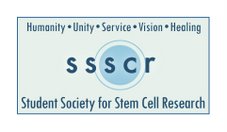March 2008 Volume 9 Number 3
Visit Nature Reviews Molecular Cell Biology online to browse the journal.
Now available at http://ealerts.nature.com/cgi-bin24/DM/y/ejKe0Xztnp0Hjf0bZF0EJ
Please note that you need to be a subscriber to enjoy full text access to Nature Reviews Molecular Cell Biology online. To purchase a subscription, please visit:
http://ealerts.nature.com/cgi-bin24/DM/y/ejKe0Xztnp0Hjf0a8b0EC
Alternatively, to recommend a subscription to your library, please visit
http://ealerts.nature.com/cgi-bin24/DM/y/ejKe0Xztnp0Hjf0lln0ER
*********************************************************************
Nature Reviews Molecular Cell Biology Impact Factor: 31.354*
(*Journal Citation Reports, Thomson, 2007)
*********************************************************************
=====================================================================
IT'S NOW FREE TO POST YOUR VACANCY ON
naturejobs.com http://ealerts.nature.com/cgi-bin24/DM/y/ejKe0Xztnp0Hjf0bZD0EH
It's the breakthrough you've been waiting for. Naturejobs.com — the scientific jobs board from Nature —
now lets you advertise your vacancy completely FREE OF CHARGE
Go to http://ealerts.nature.com/cgi-bin24/DM/y/ejKe0Xztnp0Hjf0BGJp0EO or telephone:
Europe: +44 (0) 20 78434961
US: + 1 800 9897718
=====================================================================
=====================================================================
Nature Methods' special issue on Structural Genomics
Having trouble expressing your favorite protein? Struggling to get crystals?
Wondering how large structural genomics centers do it?
Check out the February 2008 issue of Nature Methods for special content
in structural biology and structural genomics. A Commentary, Review,
Perspective and Technology Feature address methodological issues related
to protein expression, purification and crystallization in the context of
large scale structural genomics initiatives, as well as small scale lab
production. Visit Nature Methods at http://ealerts.nature.com/cgi-bin24/DM/y/ejKe0Xztnp0Hjf0Hwa0En
for a useful and practical reference.
=====================================================================
=====================================================================
This month's FEATURED article:
Small non-coding RNAs in animal development
Giovanni Stefani & Frank J. Slack
p219 | doi:10.1038/nrm2347
http://ealerts.nature.com/cgi-bin24/DM/y/ejKe0Xztnp0Hjf0BoL20E3
=====================================================================
From the editors
p183 | doi:10.1038/nrm2364
http://ealerts.nature.com/cgi-bin24/DM/y/ejKe0Xztnp0Hjf0BoL30E4
----------------------
RESEARCH HIGHLIGHTS
----------------------
Cell migration: Collaborations at the cell front
p184 | doi:10.1038/nrm2359
http://ealerts.nature.com/cgi-bin24/DM/y/ejKe0Xztnp0Hjf0BoL40E5
Stem cells: Harvest in the right season
p185 | doi:10.1038/nrm2355
http://ealerts.nature.com/cgi-bin24/DM/y/ejKe0Xztnp0Hjf0BoL50E6
IN BRIEF
Signal transduction | Cell cycle | Protein degradation
p185 | doi:10.1038/nrm2360
http://ealerts.nature.com/cgi-bin24/DM/y/ejKe0Xztnp0Hjf0BoL60E7
Post-translational modification: Sugar-coated signalling
p186 | doi:10.1038/nrm2350
http://ealerts.nature.com/cgi-bin24/DM/y/ejKe0Xztnp0Hjf0BoL70E8
Membrane trafficking: Mitochondria-peroxisome connection
p186 | doi:10.1038/nrm2362
http://ealerts.nature.com/cgi-bin24/DM/y/ejKe0Xztnp0Hjf0BoL80EA
Plant cell biology: Shedding light on plant growth
p187 | doi:10.1038/nrm2349
http://ealerts.nature.com/cgi-bin24/DM/y/ejKe0Xztnp0Hjf0BoMA0EK
Cytoskeleton: Microtubule tip tracker
p188 | doi:10.1038/nrm2348
http://ealerts.nature.com/cgi-bin24/DM/y/ejKe0Xztnp0Hjf0BoMB0EL
TECHNOLOGY WATCH
Colour-changing worms | Exons exposed
p188 | doi:10.1038/nrm2356
http://ealerts.nature.com/cgi-bin24/DM/y/ejKe0Xztnp0Hjf0BoMC0EM
Mechanisms of disease: Getting back to [beta]-cell basics
p188 | doi:10.1038/nrm2361
http://ealerts.nature.com/cgi-bin24/DM/y/ejKe0Xztnp0Hjf0BoMD0EN
IN THE NEWS
Escorting siRNA
p189 | doi:10.1038/nrm2363
http://ealerts.nature.com/cgi-bin24/DM/y/ejKe0Xztnp0Hjf0BoME0EO
AN INTERVIEW WITH...
Marshall Nirenberg
p190 | doi:10.1038/nrm2353
http://ealerts.nature.com/cgi-bin24/DM/y/ejKe0Xztnp0Hjf0BoMF0EP
----------------------
REVIEWS
----------------------
Article series:
Mechanisms of disease: http://ealerts.nature.com/cgi-bin24/DM/y/ejKe0Xztnp0Hjf02b30EK
Molecular and metabolic mechanisms of insulin resistance and [beta]-cell failure in type 2 diabetes
Deborah M. Muoio and Christopher B. Newgard
p193 | doi:10.1038/nrm2327
Type 2 diabetes is projected to afflict 300 million people worldwide by 2020. Therefore, a deeper understanding of the processes and mechanisms that lead to metabolic failure in key tissues and organ systems in patients with type 2 diabetes is urgently required.
Abstract: http://ealerts.nature.com/cgi-bin24/DM/y/ejKe0Xztnp0Hjf0BoMG0EQ
Article: http://ealerts.nature.com/cgi-bin24/DM/y/ejKe0Xztnp0Hjf0BoMH0ER
The Rpd3/Hda1 family of lysine deacetylases: from bacteria and yeast to mice and men
Xiang-Jiao Yang and Edward Seto
p206 | doi:10.1038/nrm2346
The Rpd3/Hda1 family of protein lysine deacetylases has numerous substrates and diverse functions. Whereas class I enzymes are multiprotein histone deacetylase complexes that are crucial for chromatin modification and transcriptional regulation, some class II enzymes function as signal transducers that are regulated by nucleocytoplasmic translocation.
Abstract: http://ealerts.nature.com/cgi-bin24/DM/y/ejKe0Xztnp0Hjf0BoMI0ES
Article: http://ealerts.nature.com/cgi-bin24/DM/y/ejKe0Xztnp0Hjf0BoMJ0ET
Small non-coding RNAs in animal development
Giovanni Stefani and Frank J. Slack
p219 | doi:10.1038/nrm2347
Our understanding of the biological functions of small non-coding RNAs has been fostered by the analysis of genetic deletions of individual microRNAs (miRNAs) in mammals. These studies show that miRNAs are key regulators of animal development and are potential human disease loci.
Abstract: http://ealerts.nature.com/cgi-bin24/DM/y/ejKe0Xztnp0Hjf0BoMK0EU
Article: http://ealerts.nature.com/cgi-bin24/DM/y/ejKe0Xztnp0Hjf0BoL20E3
Apoptosis: controlled demolition at the cellular level
Rebecca C. Taylor, Sean P. Cullen and Seamus J. Martin
p231 | doi:10.1038/nrm2312
Cells that undergo apoptosis are demolished in a controlled manner that minimizes damage to neighbouring cells and avoids the release of immunostimulatory molecules. These events are orchestrated primarily by a family of cysteine proteases called caspases, which target hundreds of proteins for restricted proteolysis.
Abstract: http://ealerts.nature.com/cgi-bin24/DM/y/ejKe0Xztnp0Hjf0BoML0EV
Article: http://ealerts.nature.com/cgi-bin24/DM/y/ejKe0Xztnp0Hjf0BoMM0EW
A structural understanding of the dynamic ribosome machine
Thomas A. Steitz
p242 | doi:10.1038/nrm2352
Ribosomes have been the focus of structural and biochemical studies for more than 50 years. Recently, high-resolution structures have provided molecular snapshots of different intermediates in ribosome-mediated translation in atomic detail, which has revolutionized our understanding of the mechanism of protein synthesis.
Abstract: http://ealerts.nature.com/cgi-bin24/DM/y/ejKe0Xztnp0Hjf0BoMN0EX
Article: http://ealerts.nature.com/cgi-bin24/DM/y/ejKe0Xztnp0Hjf0BoMO0EY
----------------------
PERSPECTIVE
----------------------
TIMELINE
Self-organization in cell biology: a brief history
Eric Karsenti
p255 | doi:10.1038/nrm2357
The idea that processes can be self-organized and self-reproducing is more than 100 years old. But self-organization principles that were first developed in chemistry and physics are only now beginning to be applied to cellular and subcellular morphogenesis.
Abstract: http://ealerts.nature.com/cgi-bin24/DM/y/ejKe0Xztnp0Hjf0BoMP0EZ
Article: http://ealerts.nature.com/cgi-bin24/DM/y/ejKe0Xztnp0Hjf0BoMQ0Ea
=====================================================================
Cell Migration Gateway - Leading the way in cell migration
New expandable KNOWLEDGEBASE * More Proteins * More Information
Research highlights, library of must-read articles, research data &
resources, reagents & protocols, news & events, and email alerts.
Visit the gateway to get FREE access to this comprehensive and regularly
updated resource for anyone interested in cell migration.
http://ealerts.nature.com/cgi-bin24/DM/y/ejKe0Xztnp0Hjf0hkE0Ef
A collaboration between the Cell Migration Consortium and Nature Publishing Group
=====================================================================
You have been sent this Table of Contents Alert because you have opted in to receive it. You can change or discontinue your e-mail alerts at any time, by modifying your preferences on your nature.com account at:
http://ealerts.nature.com/cgi-bin24/DM/y/ejKe0Xztnp0Hjf0Zzu0EU
(You will need to log in to be recognised as a nature.com registrant).
For further technical assistance, please contact our registration department:
registration@nature.com
For print subscription enquiries, please contact our subscription department:
subscriptions@nature.com
For other enquiries, please contact our customer feedback department:
feedback@nature.com
Nature Publishing Group | 75 Varick Street, 9th Floor | New York | NY 10013-1917 | USA
Nature Publishing Group's worldwide offices:
London - Paris - Munich - New Delhi - Tokyo - Melbourne -
San Diego - San Francisco - Washington - New York - Boston
(c) Copyright 2008 Nature Publishing Group
=====================================================================










